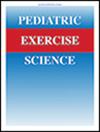Essential Improvements in Fat Percentage and Cardiometabolic Fitness After a Residential Stay for Socially Vulnerable Children-With and Without the "11 for Health" Concept.
IF 1.3
4区 医学
Q3 PEDIATRICS
引用次数: 0
Abstract
The Danish Christmas Seal Homes offer a 10-week residential stay for socially vulnerable children. We aimed to examine the effects on body composition and cardiometabolic fitness variables of the standard program (SG) and whether substituting physical activity sessions with sessions from a football-based health education program is beneficial for the participants ("11 for Health"; SG+). Three hundred and nine children participated in SG (12.4 [1.6] y) and 305 in SG+ (12.4 [1.4] y). Fat percentage was lowered by 6% for females (from 37% to 31%) and 8% for males (from 36% to 28%), with no between-group differences. We observed improvements in systolic and diastolic blood pressure (3 and 5 mm Hg, respectively), resting heart rate (10 beats/min), aerobic fitness, jump performance, and relative muscle mass with no between-group differences. Furthermore, there were between-group differences in insulin levels for females (1.7 pmol/L; 95% CI, 0.3 to 3.0) and postural balance for males (1.0 s; 95% CI, 0.0 to 2.0), both in favor of SG+, and covered distance in the Andersen test for females (26 m; 95% CI, 3 to 49) in favor of SG. In conclusion, a 10-week stay at the Danish Christmas Seal Home resulted in clinically relevant improvement in fat percentage and cardiometabolic fitness in socially vulnerable children, regardless of the program type.为社会弱势儿童提供住宿后脂肪比例和心血管代谢健康状况的基本改善--有无 "11 为健康 "概念。
丹麦圣诞海豹之家为社会弱势儿童提供为期 10 周的寄宿生活。我们的目的是研究标准项目(SG)对身体成分和心脏代谢健康变量的影响,以及用足球健康教育项目("11 为健康";SG+)替代体育锻炼是否对参与者有益。有 39 名儿童参加了 SG(12.4 [1.6] 岁),305 名儿童参加了 SG+(12.4 [1.4] 岁)。女性脂肪率降低了 6%(从 37% 降至 31%),男性脂肪率降低了 8%(从 36% 降至 28%),组间无差异。我们观察到收缩压和舒张压(分别为 3 毫米汞柱和 5 毫米汞柱)、静息心率(10 次/分钟)、有氧健身、跳跃表现和相对肌肉质量均有所改善,但无组间差异。此外,女性的胰岛素水平(1.7 pmol/L;95% CI,0.3 至 3.0)和男性的姿势平衡(1.0 秒;95% CI,0.0 至 2.0)存在组间差异,均有利于 SG+,而女性的安徒生测试覆盖距离(26 米;95% CI,3 至 49)则有利于 SG。总之,无论项目类型如何,在丹麦圣诞海豹之家进行为期 10 周的训练都能改善社会弱势儿童的脂肪率和心脏代谢健康状况。
本文章由计算机程序翻译,如有差异,请以英文原文为准。
求助全文
约1分钟内获得全文
求助全文
来源期刊

Pediatric Exercise Science
医学-生理学
CiteScore
2.80
自引率
0.00%
发文量
33
审稿时长
>12 weeks
期刊介绍:
Pediatric Exercise Science is a journal committed to enriching the scientific knowledge of exercise during childhood and adolescence. To this end it publishes information that contributes to an understanding of (a) the unique aspects of the physiologic, physical, biochemical, and psychologic responses of children to exercise, (b) the role of exercise in the treatment of pediatric chronic diseases, (c) the importance of physical activity in the prevention of illness and preservation of wellness, and (d) the means by which participation in sports may be made safer and more enjoyable for children and youth. Consideration will be given for publication of work by various methodologies consistent with the scientific approach.
Besides original research, the journal includes review articles, abstracts from other journals, book reviews, and editorial comments. Pediatric Exercise Science encourages the expression of conflicting opinions regarding children and exercise by providing a forum for alternative viewpoints. At the same time it serves as a means of accumulating a base of research information that will allow application of experimental data to clinical practice. The scientific disciplines contributing to this body of knowledge are diverse. Therefore it is the purpose of this journal to provide a common focus for disseminating advances in the science of exercise during childhood. In doing so, the journal allows the opportunity for cross-fertilization of ideas between disciplines that will potentiate the growth of knowledge in this field. Pediatric Exercise Science seeks to stimulate new ideas regarding exercise in children and to increase the awareness of scientists, health care providers, and physical educators of the importance of exercise during childhood.
 求助内容:
求助内容: 应助结果提醒方式:
应助结果提醒方式:


